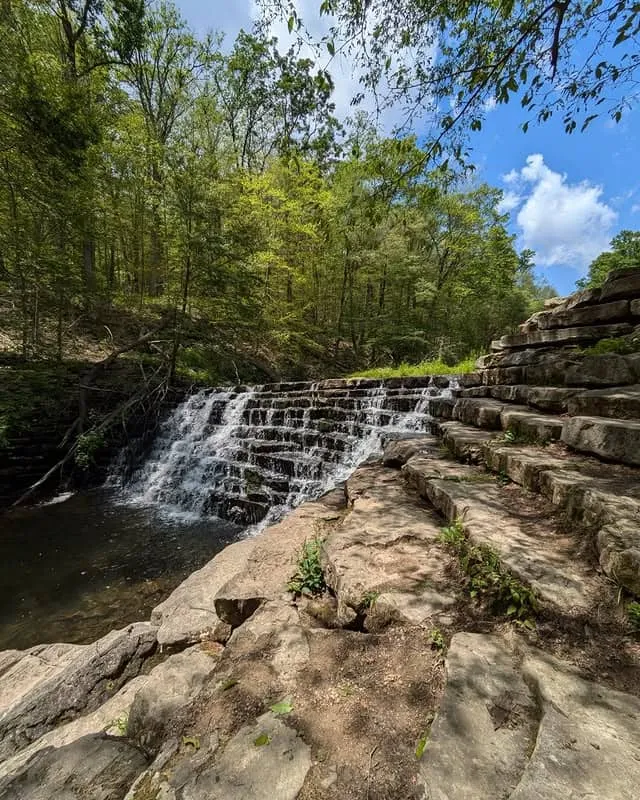Laurel Hill State Park consists of 3,935 acres of mountainous Sommerset County. To reach the park from Pennsylvania Turnpike Exit 10 (Somerset) drive West on PA Route 31 from Somerset for 10 miles turn left on an unnumbered route by a directional sign - Laurel Hill State Park. The park may also be reached from Pennsylvania Turnpike Exit 9 (Donegal) by turning left on PA Route 31 and heading East to PA Routes 381/711. Turn right on PA Routes 381/711 and go South to Champion. Turn left and follow the sign to Seven Springs and Laurel Hill State Park.
Flora and Fauna
As you drive or walk through the park, you will see Laurel, Rhododendron, Sugar Maple, White and Red Oak, Birch, Cherry, Tulip Poplar, and Hemlock trees. There is a small stand of virgin Hemlock on the Hemlock Hiking Trail. Wildlife includes white tailed deer, raccoon, groundhog, red, gray and fox squirrels, skunk, mink, muskrat, opossum, rabbit, turkey, ruffed grouse, ringneck pheasants, bobwhite quail and a variety of other birds.
Opprotunities
Family Camping: The Class A family camping area consists of 270 tent or trailer sites with flush toilets, hot water showers, sanitation dumping stations, and drinking water.
Hunting: From the fall archery season to March 31, Sundays excepted, 2,100 acres are open to hunting. Common game species are rabbit, squirrel, grouse, turkey, deer, ringneck pheasant, raccoon and groundhog.
Organized Group Tenting: Qualified organized adult and youth groups may use the 125 person capacity area. This area is open year-round and has limited facilities with pit toilets, drinking water, fire rings and picnic tables.
Organized Group Camps: Large cabin camps are available for non-profit organized youth and adult groups from mid-April to mid-October. Rentals may be as short as one night. Facilities include flush toilets, central showerhouse, large dining hall and kitchen plus small cabins for campers. Applications are available at the Park Office.
Boating: Non-powered boats and registered electric powered boats are permitted on the lake. Non-powered boats must display any of the following: 1) State Park launching permit, available at most State Park Offices, 2) State Park mooring permit, or 3) current number and certificate of watercraft registration. Fifteen mooring sites and one boat launch area are available. Boat rentals are currently available.
Fishing: Anglers may test their abilities against the bass, trout, catfish, suckers, bluegills, perch, crappies and sunfish in the lake 24 hours a day.
Fishing is also permitted in Laurel Hill Creek and Jones Mill Run which are excellent trout streams in the park.
Hiking: A 12 mile trail system invites the hiker to explore the park.
Remains of a logging railroad may be seen such as a wooded cross-tie or a rusty rail spike along the Tramroad Trail.
This railroad hauled logs off the mountains to a sawmill located at Humbert near Confluence, Pennsylvania.
A beautiful stand of virgin timber may be seen along the Hemlock Trail.
Environmental Education: A self-guiding nature trail is located off Hemlock Trail.
In the summer, a park naturalist offers campfire programs and guided walks.
Snowmobiling: The 10 mile trail system in the park connects with a 60 mile trail system on the Forbes State Forest. The trail system is open daily for registered snowmobiles after the end of antlerless deer season in late December. Trail maps are available at the Park Office.
Ice Sports: Ice skating is enjoyed by many on a maintained area of Laurel Hill Lake. The rest of the lake is open to ice fishing and ice boating. Ice boats must display a current State Park launching permit.
History
In the past an old country road passed through the park area. Along this road, at what is now Group Camp No. 8, stood an inn for the wayfarer. Below the inn stood a grist mill for grinding the local wheat and rye. At the head of the lake there once stood a pottery factory and an iron forge.
George Washington's troops camped within the park boundaries during the "Whiskey Rebellion" of 1794.
The first recreational facilities at the park were built by the Works Progress Administration (WPA) and the Civilian Conservation Corps (CCC) under the supervision of the National Park Service. The area was named the Laurel Hill Recreation Demonstration Area and work began in 1935. By 1938, Laurel Hill Lake was completed. By 1942 four organized group camps and two former CCC Camps were being used for camping.
Return to
